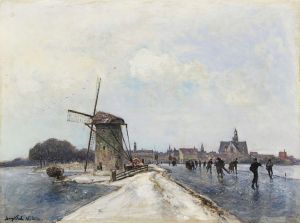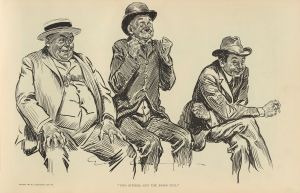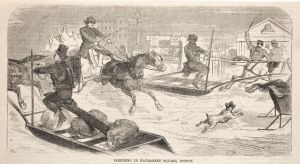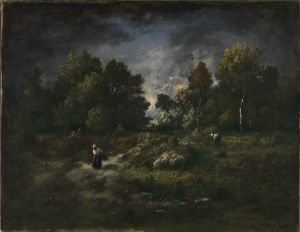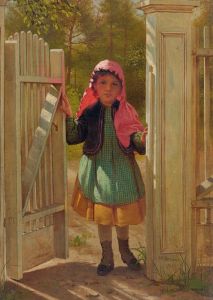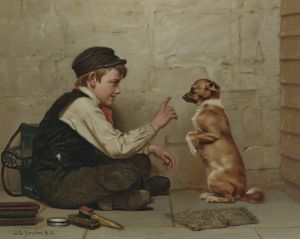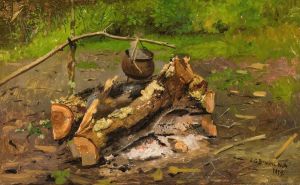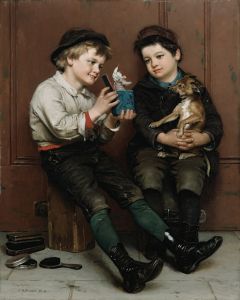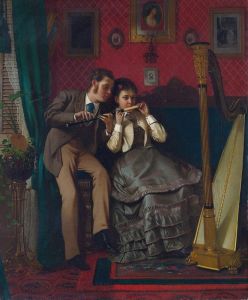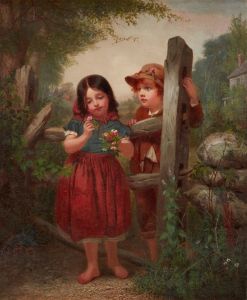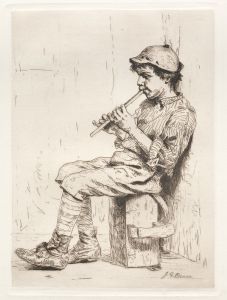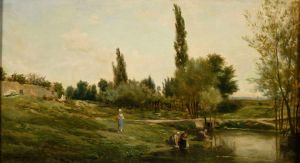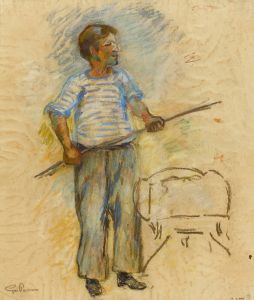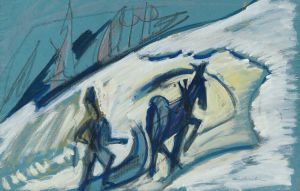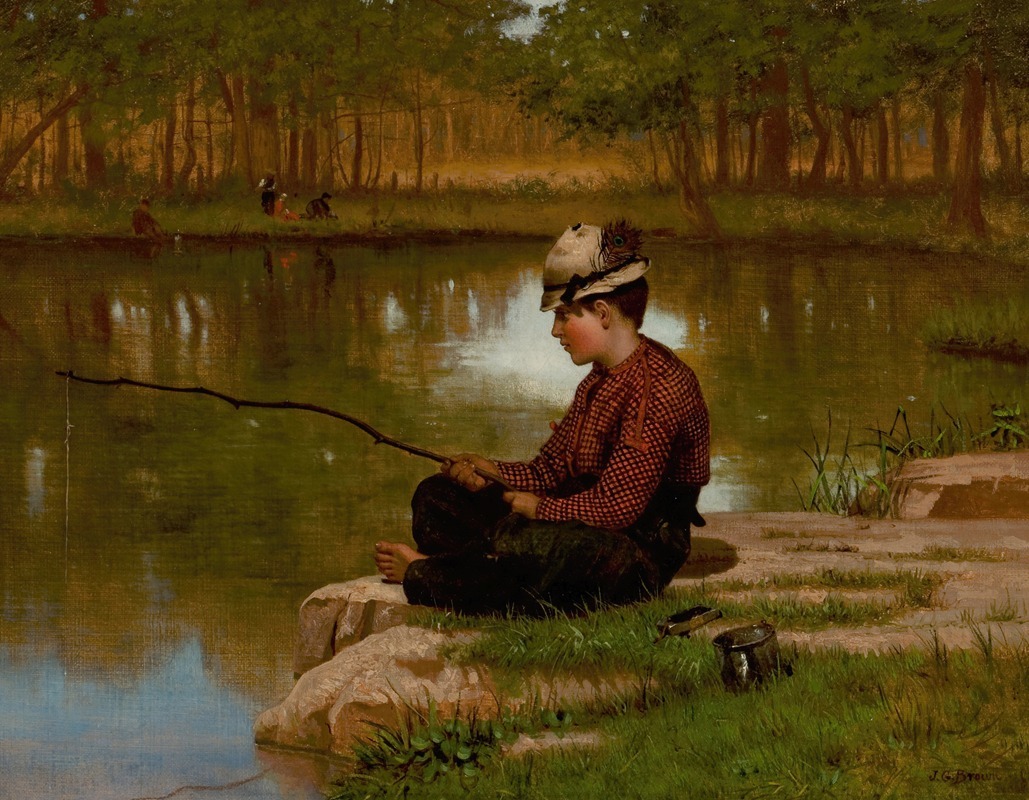
Waiting for a Bite, Central Park
A hand-painted replica of John George Brown’s masterpiece Waiting for a Bite, Central Park, meticulously crafted by professional artists to capture the true essence of the original. Each piece is created with museum-quality canvas and rare mineral pigments, carefully painted by experienced artists with delicate brushstrokes and rich, layered colors to perfectly recreate the texture of the original artwork. Unlike machine-printed reproductions, this hand-painted version brings the painting to life, infused with the artist’s emotions and skill in every stroke. Whether for personal collection or home decoration, it instantly elevates the artistic atmosphere of any space.
"Waiting for a Bite, Central Park" is a painting by John George Brown, an American artist known for his genre paintings depicting everyday life, particularly scenes involving children. Brown was born in Durham, England, in 1831 and emigrated to the United States in 1853. He became one of the most popular and financially successful artists of his time, often focusing on the lives of street urchins and working-class children in New York City.
Created in the late 19th century, "Waiting for a Bite, Central Park" captures a serene and idyllic moment in Central Park, New York City. The painting features a young boy, likely a newsboy or a bootblack, sitting patiently by the water's edge with a fishing rod, waiting for a fish to bite. The setting is Central Park, which was designed by Frederick Law Olmsted and Calvert Vaux and opened in 1858. The park provided a natural and recreational space for the city's residents, a stark contrast to the bustling urban environment surrounding it.
Brown's work is characterized by its attention to detail and its ability to convey the innocence and resilience of children. In "Waiting for a Bite, Central Park," the artist employs a realistic style, capturing the textures of the boy's clothing, the foliage, and the water with meticulous care. The boy's expression and posture suggest a sense of patience and hope, themes that resonate with the viewer and reflect the artist's empathetic approach to his subjects.
The painting is also notable for its use of light and color. Brown skillfully uses natural light to highlight the boy and the surrounding landscape, creating a warm and inviting atmosphere. The colors are rich and vibrant, with the greens of the park and the blues of the water providing a harmonious backdrop to the central figure.
John George Brown's paintings, including "Waiting for a Bite, Central Park," were widely exhibited and collected during his lifetime. He was a member of the National Academy of Design and served as its vice president from 1899 to 1904. His works were popular among both the public and critics, and they continue to be appreciated for their historical and artistic value.
Today, "Waiting for a Bite, Central Park" is recognized as an important example of Brown's genre painting. It offers a glimpse into the daily lives of children in 19th-century New York City and reflects the artist's skill in capturing the human experience with warmth and sensitivity. The painting remains a testament to Brown's legacy as a prominent figure in American art history.





